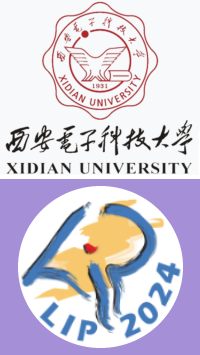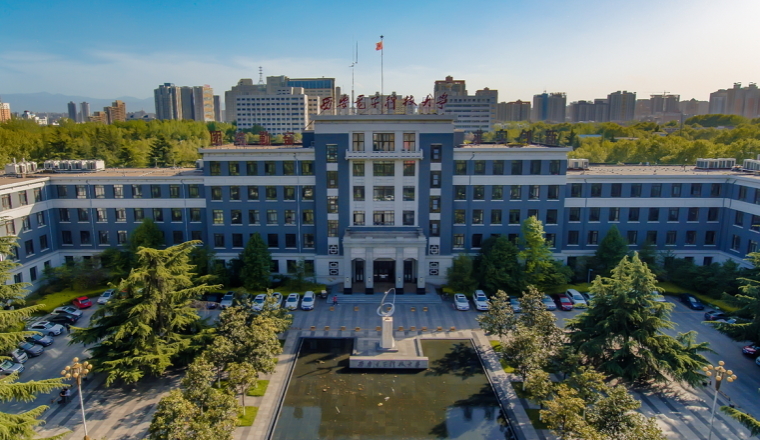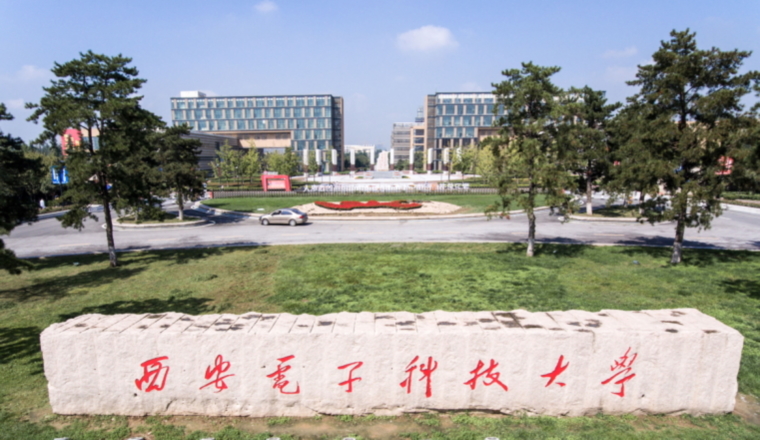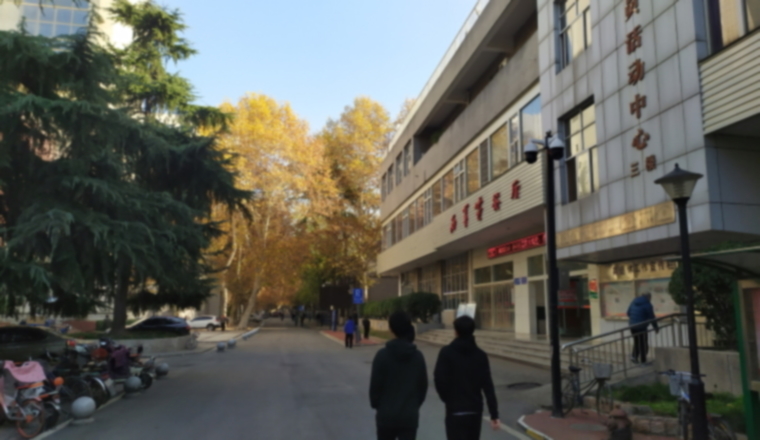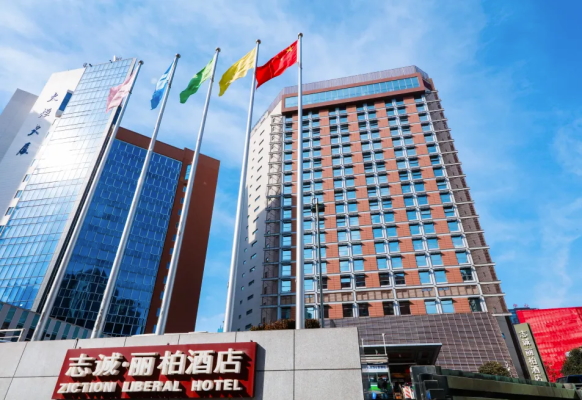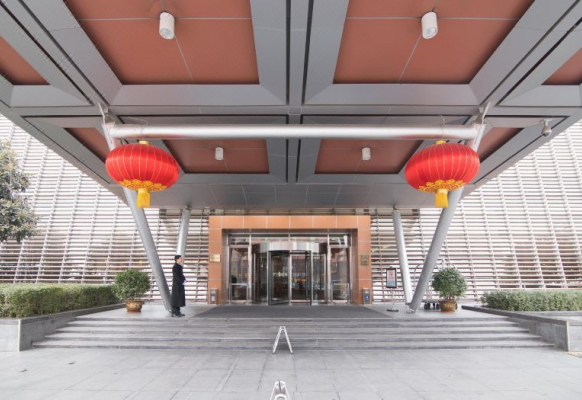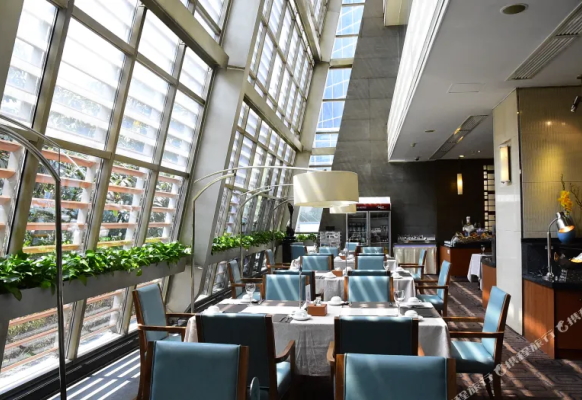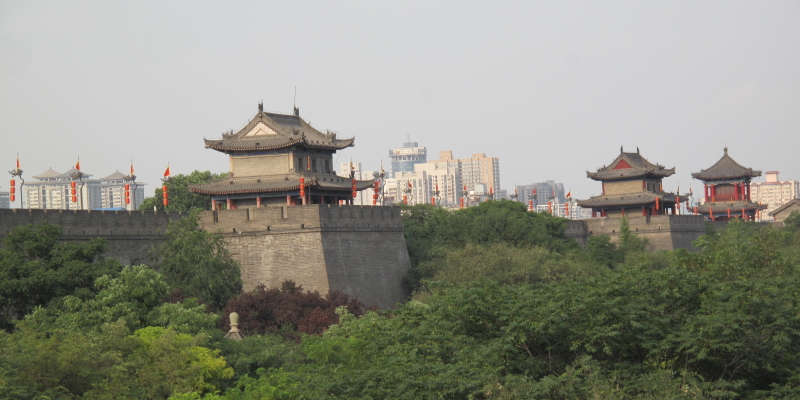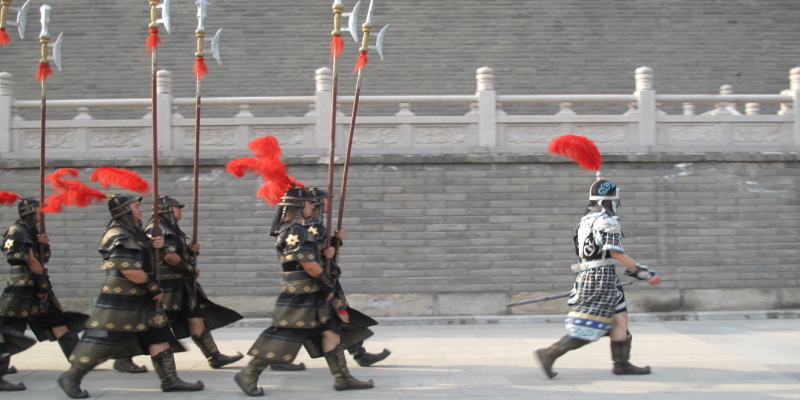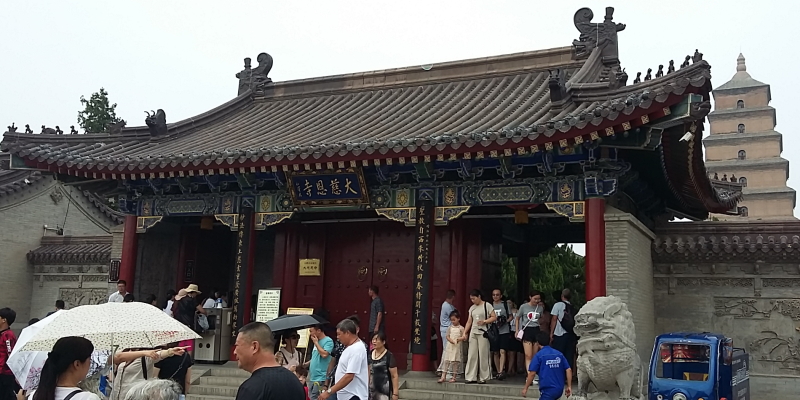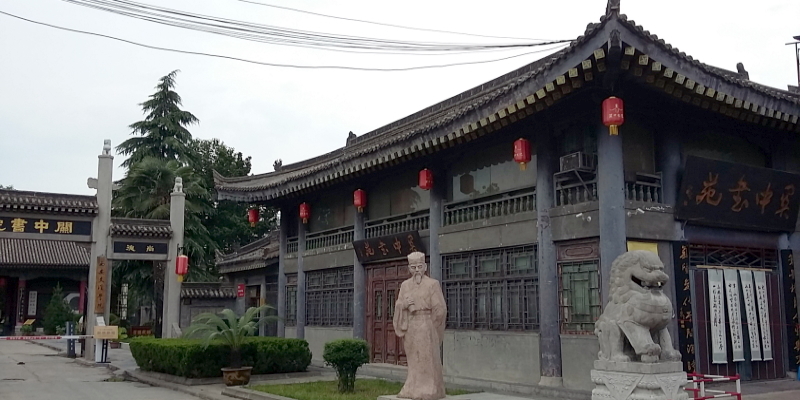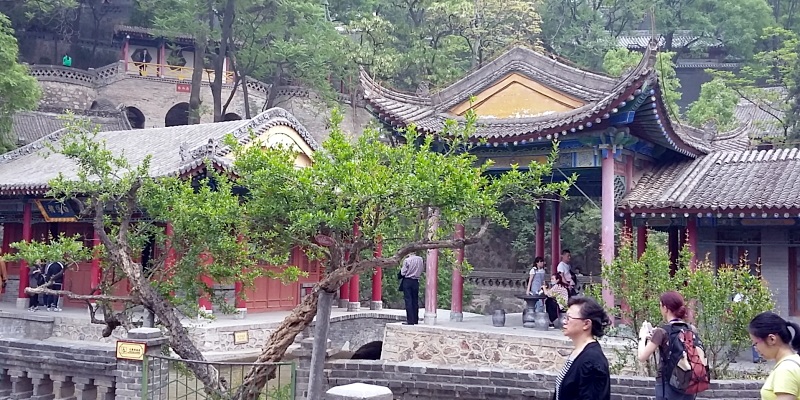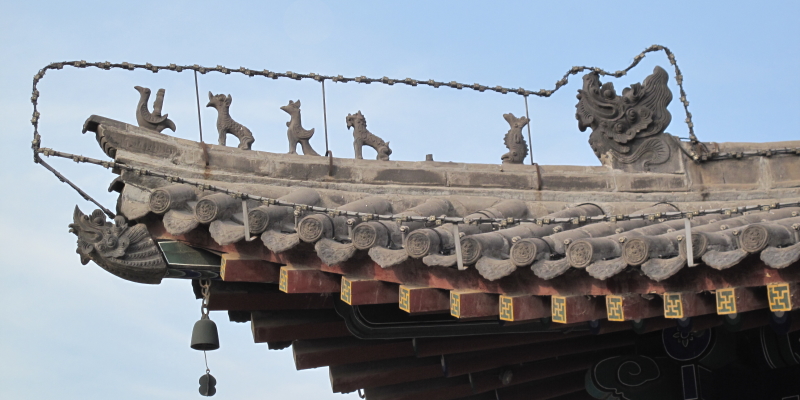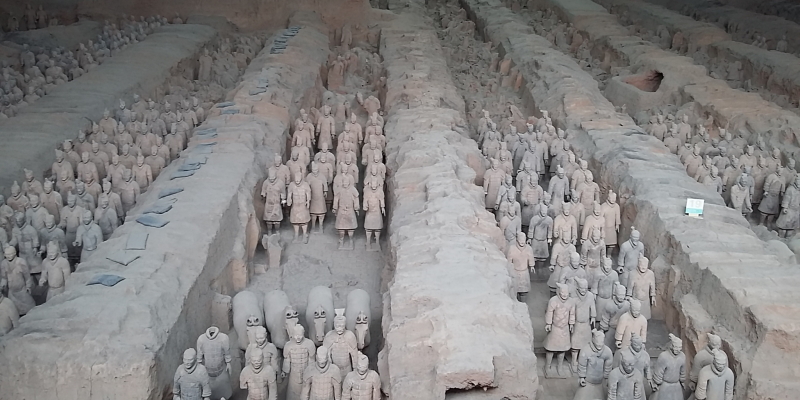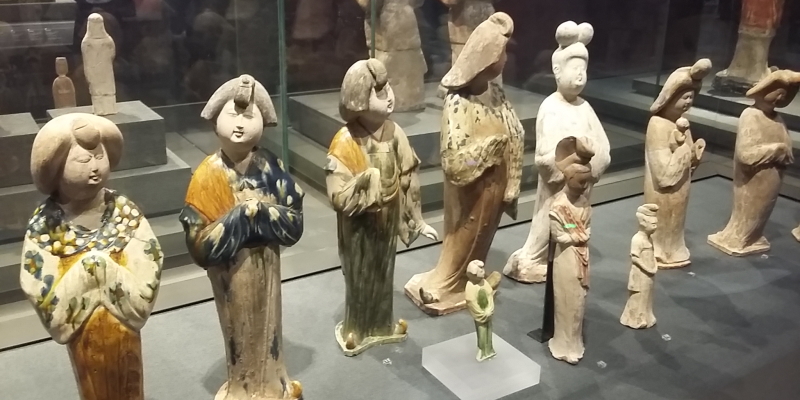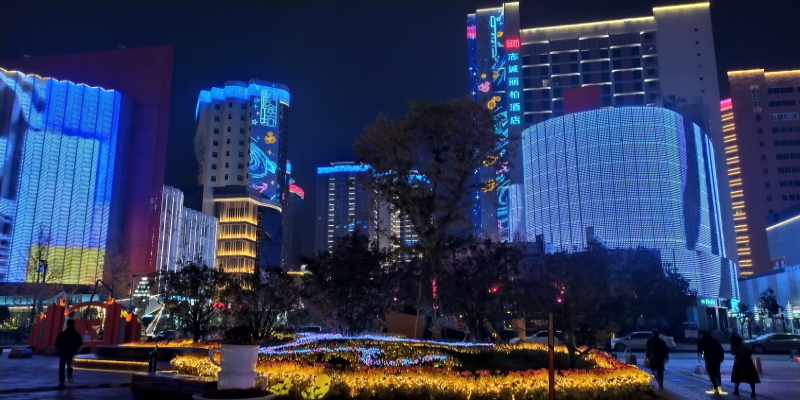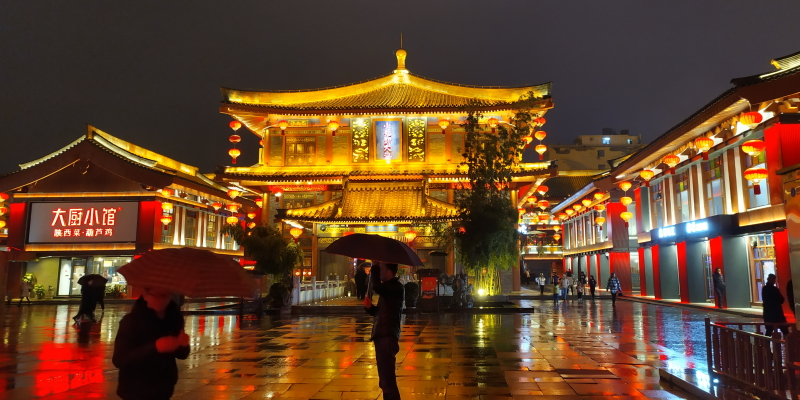Scope & Background
-
- Scope of LIP conferences
- LIP2024: flyer and posters
- Previous LIP, OPC & OPS conferences...
The 14th international
conference series on Laser-light and Interactions
with Particles (LIP) - Optical Particle Characterization
follow-up ! is organized by Xidian
University on September 18th-22nd, 2024,
in Xi’an, Shaanxi, China.
The conference is focused on interactions between laser beams and particles, from theory to practice (download the flyer), encompassing in particular the following fundamental and applied topics :
The conference is focused on interactions between laser beams and particles, from theory to practice (download the flyer), encompassing in particular the following fundamental and applied topics :
- Beam
shape description of laser/electromagnetic wave.
- Optical forces and other mechanical effects of light/laser/electromagnetic wave.
- Light/laser/electromagnetic scattering of complex particles and aggregates.
- Optical particle sizing and characterization methods.
- Light/electromagnetic wave propagation in complex media.
- Optical forces and other mechanical effects of light/laser/electromagnetic wave.
- Light/laser/electromagnetic scattering of complex particles and aggregates.
- Optical particle sizing and characterization methods.
- Light/electromagnetic wave propagation in complex media.
-
Optical imaging with structured illumination (tissue,
particles,…).
- AI-assisted analysis in light/electromagnetic scattering.
- Related applications in biology and biomedicine.
- Related applications in multiphase flow, aerosol science and atmospheric environment.
- Related applications nanoscience, plasma and soft matter physics.
Although the conference is mainly intended to deal with
light/laser/electromagnetic wave, papers dealing with
acoustical and quantum beams (scalar waves) relating with
the topics of the conference are welcomed.- AI-assisted analysis in light/electromagnetic scattering.
- Related applications in biology and biomedicine.
- Related applications in multiphase flow, aerosol science and atmospheric environment.
- Related applications nanoscience, plasma and soft matter physics.
Download the flyer and posters of the conference LIP2024:
|
Flyer (A4-format) |
Poster (A4-format) |
Poster (A2-format) |
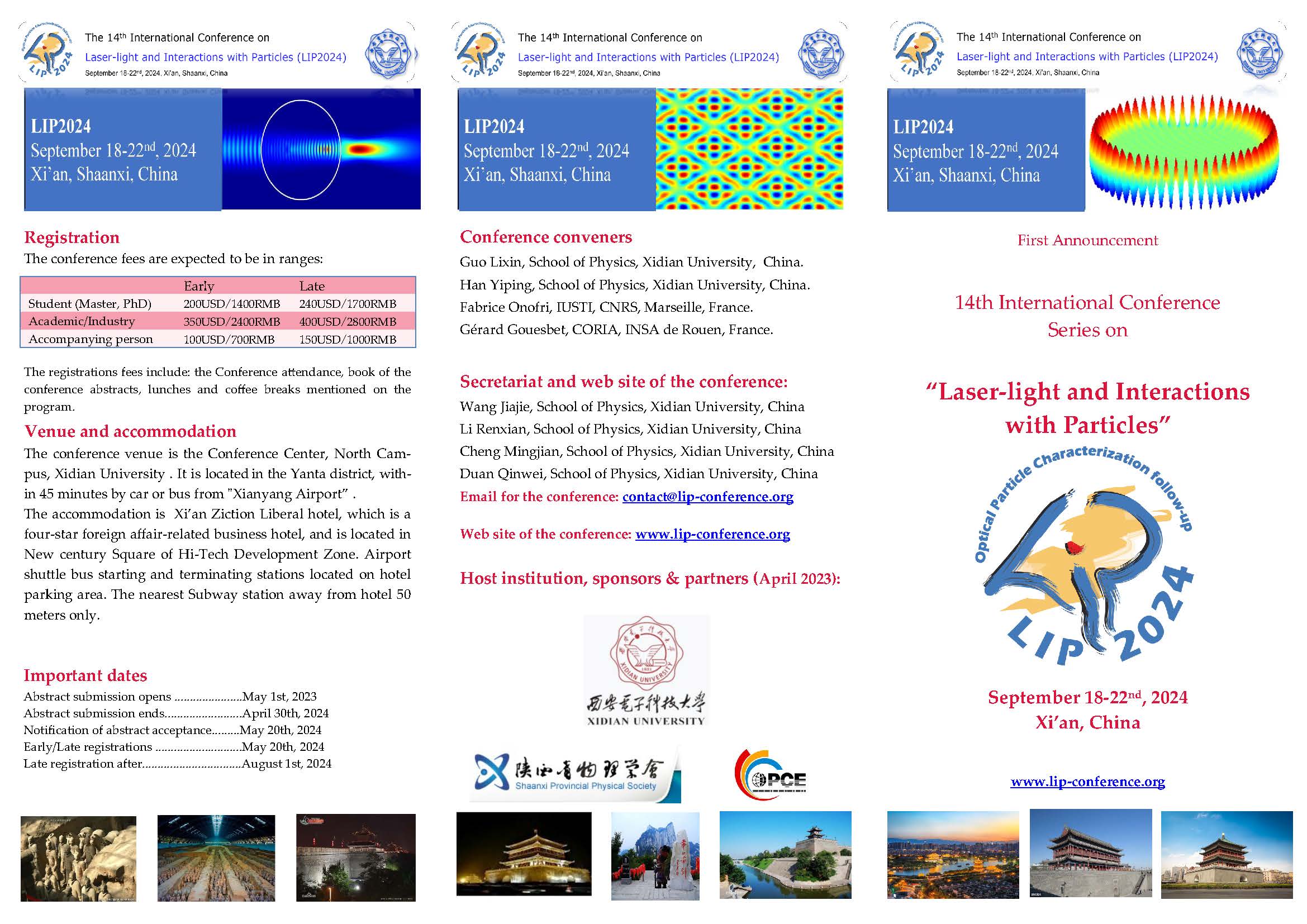 |
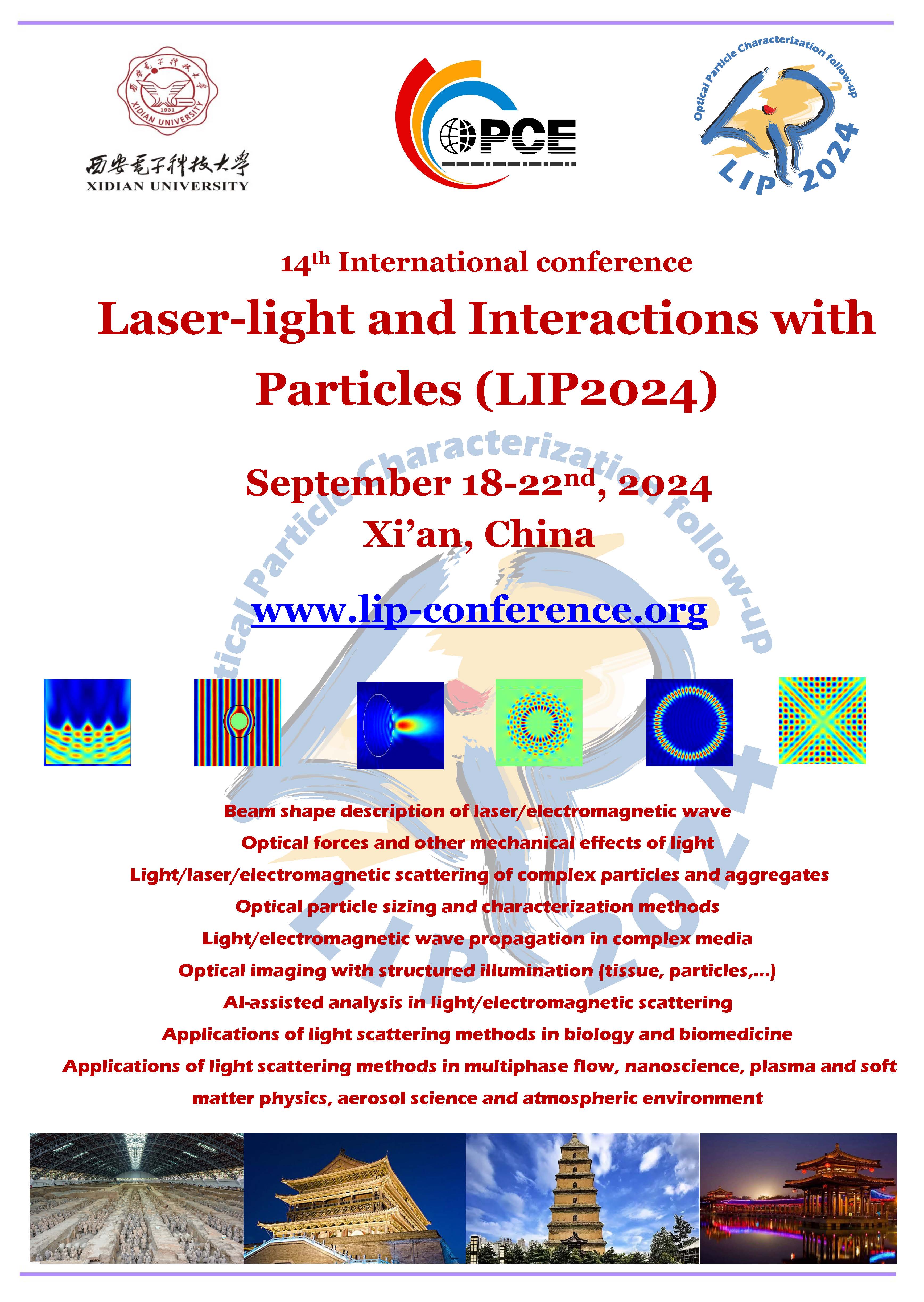 |
 |
This conference series has
been continually providing forums for promoting the
interchange of new ideas on the development of advanced
theories and models, as well as the latest experimental
developments. Since nearly four decades
this series, whose topics are continuously evolving,
provides a source of state-of-the-art in
light and shaped beam interactions with particle and
particle systems. The present edition follows the former
Optical Particle Sizing (OPS) and Optical
Particle Characterization (OPC) conferences held
in Rouen
1987; Tempe,
AZ, 1990; Yokohama, 1993; Nürnberg,
1995; Minneapolis,MN,1998; Brighton,
2001; Kyoto,
2004; Graz, 2007 as well as the reformulated LIP
conference, held in Rouen
in 2012; Marseille, 2014; Xi'an 西安市, 2016, College
Station, TX, 2018, and Warsaw
in 2022. (The 13th conference was postponed to
2022 due to the covid-19 pandemic, but the special issue was
maintained! )
Find detailed information (and papers) on the previous websites of LIP conferences :
Over the years, selected papers from this conference series were published in books and special issues of highly ranked journals (Applied Optics, Particle & Particle Systems Characterization, Journal of Quantitative Spectroscopy & Radiative Transfer), e.g.
Find detailed information (and papers) on the previous websites of LIP conferences :
 |
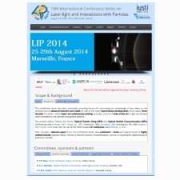 |
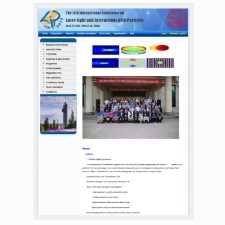 |
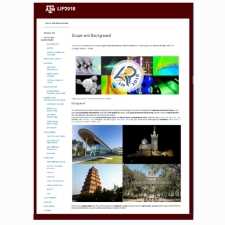 |
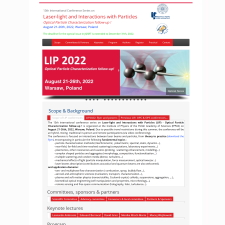 |
| LIP2012 |
LIP2014 |
LIP2016 |
LIP2018 |
LIP2022 |
Over the years, selected papers from this conference series were published in books and special issues of highly ranked journals (Applied Optics, Particle & Particle Systems Characterization, Journal of Quantitative Spectroscopy & Radiative Transfer), e.g.
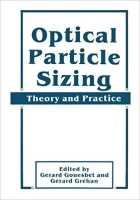 |
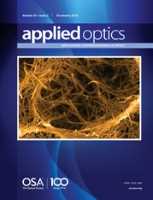 |
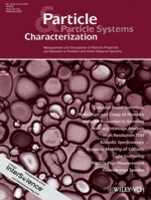 |
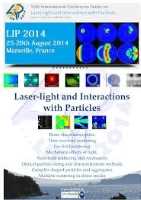 |
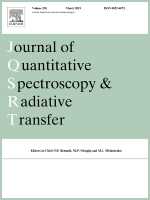 |
| OPS1987... |
OPS1991... |
OPC1996... |
LIP2014... |
...LIP2020 |
Committees, sponsors & partners
-
- Scientific Committee
- Advisory committee
- Organizing committee
- Hosts, partners & sponsors
-
- L.A. Ambrosio, University of São Paulo, São Paulo,
USP, Brazil
- X.S. Cai, University of Shanghai for Science and Technology, Shanghai, China
- G. Gouesbet, CORIA, National Institute of Applied Sciences, Rouen, France
- D. Grier, Depart. of Physics and Center for Soft Matter Research, New-York University, NY, USA.
- Y.P. Han, School of Physics, Xidian University, Xidian, China
- J.A. Lock, Cleveland State University, Cleveland, OH, USA.
- P.L. Marston , Depart. Physics & Astronomy, Washington State University, Pullman, USA
- F.R.A. Onofri, IUSTI, National Center for Scientific Research, Marseille, France
- K. F. Ren, Optics & Lasers, CORIA, Normandy University, Rouen, France
- G. Videen, Army Research Laboratory, Adelphi, MD, USA
- J.J. Wang, School of Physics, Xidian University, Xidian, China
- T. Wriedt, ITW, University of Bremen, Bremen, Germany
- P. Yang, Dept. Atmospheric Sciences, Texas A&M University, College Station, TX, USA
- M. Yurkin, Voevodsky Inst. of Chem. Kinetics and Comb., Novosibirsk, Russia
-
- Y. Aizu, Muroran Institute of Technology, Muroran,
Japan
- M. Berg, Kansas State University, USP, Manhattan, KS, USA
- P. Briard, School of Physics, Xidian University, Xidian, China
- M. Brunel, Laser/particle(s) interaction, CORIA, Normandy University, Rouen, France
- Y.E. Geints, Zuev Institute of Atmospheric Optics, Russian Academy of Sciences, Tomsk, Russia
- D. Jakubczyk, Institut of Physics, Polish Academy of Sciences, Warsaw, Poland
- F. Lamadie, Atomic Energy and Alternative Energies Commission, Marcoule, France
- R. Li, School of Physics, Xidian University, Xidian, China
- I. V. Minin,Tomsk Polytechnic University, Tomsk,Russia
- O. Maragò, IPCF, National Research Council, Messina, Italy
- F. G. Mitri, Schlumberger–Doll Research Center, Cambridge, Massachusetts 02139, USA
- A.A.R. Neves, Federal University of ABC, Santo André, Brazil
- T. Nieminen , Dept. of Physics, University of QueenslandBrisbane, Australia
- H.-H. Qiu, Dept. Mech. Engineering, Hong Kong University of Science & Technology, Kowloon, Hong Kong
- M. Šiler, Institute of Scientific Instruments of the ASCR, Brno, Czech Republic
- X.M. Sun, School of Electrical and Electronic Engineering, Shandong University of Technology, Zibo, China
- M.R. Vetrano, Department of Mechanical Engineering, KU Leuven, Leuven, Belgium
- S. Will, Friedrich-Alexander-Universität, Erlangen-Nürnberg, LTT, Erlangen, Germany
- Y. Wu, State Key Laboratory of Clean Energy Utilization, Zhejiang University, Hangzhou, China
- F. Xu, The University of Oklahoma National Weather Center, Norman, USA
-
Conveners
- L. Guo, School of Physics, Xidian University, China
- Y. Han, School of Physics, Xidian University, China
- F. Onofri, IUSTI, CNRS, Marseille France
- G. Gouesbet, CORIA, INSA de Rouen, Saint-Etienne du Rouvray, France
Conference co-chairs
- L. Guo, School of Physics, Xidian University, China
- Y. Han, School of Physics, Xidian University, China
Organizing Committee
- H. Zhou, Vice Dean of School of Physics, Xidian University, China
- B. Wei, Vice-Dean of School of Physics, Xidian - University, China
- X. Han, Professor, School of Physics, Xidian University, China
- L. Bai, Professor, School of Physics, Xidian University, China
- P. Gao, Professor, School of Physics, Xidian University, China
- J. Li , Professor, School of Physics, Xidian University, China
- T. Guo, Director of Division of International Cooperation and Exchange, Xidian University, China
- Z. Cui, A/Professor, School of Physics, Xidian University, China
- P. Briard, A/Professor, School of Physics, Xidian University, China
- K. Lin, A/Professor, School of Physics, Xidian University, China
- H. Li, A/Professor, School of Physics, Xidian University, China
- Z. Li, A/Professor, School of Physics, Xidian University, China
Conference secretaries
- J. Wang,A/Professor, School of Physics, Xidian University, China
- R. Li,A/Professor, School of Physics, Xidian University, China
- M. Cheng, A/Professor, School of Physics, Xidian University, China
- Q. Duan,A/Professor, School of Physics, Xidian University, China
Hosts
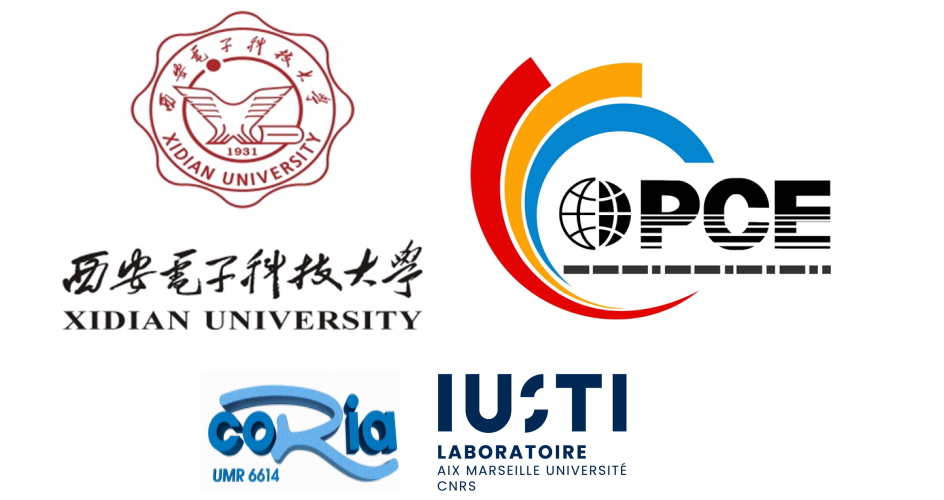
List of partners & sponsors (March, 2023) - be one of them (contact us!)
-
-
School of Physics, Xidian University
- International Academic Platform for Science and Technology of Optoelectronic Perception under Complex Environment (OPCE)
- Key Laboratory of Optoelectronic Imaging and Detection
- Key Laboratory of Radio Physics
- Division of International Cooperation and Exchange
- Collaborative Innovation Center of Information Sensing Technology

List of partners & sponsors (March, 2023) - be one of them (contact us!)
- Laboratory CORIA, UMR 6614, CNRS, INSA Rouen & Normandy University
- Laboratory IUSTI, UMR 7343, CNRS & Aix-Marseille University
Keynote lectures
-
- Speaker 1
- Speaker 2
- Speaker 3
- Speaker 4
- Speaker 5
- Speaker 6
- Speaker 7
In preparation
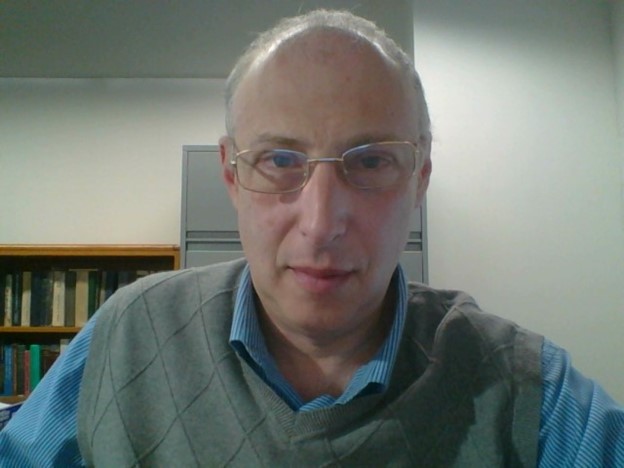 |
|
| Vadim Markel earned an undergraduate degree in Physics with specialization in Quantum Optics from Novosibirsk State University in 1987. From 1987 through 1993, he worked at the Institute of Automation and Electrometry of the Siberian Branch of the Russian Academy of Sciences conducting research in nonlinear and statistical optics. He received PhD in Physics (Optics) from New Mexico State University in 1996 and continued with postdoctoral studies in quantum many-body theory at the University of Georgia (1998-1999) and in inverse problems and imaging at the Washington University – St. Louis (1999-2001). He is currently an Associate Professor of Radiology at the University of Pennsylvania. Dr. Markel has spent two years (2015-2017) as an A*MIDEX Excellence Chair at the University of Aix-Marseille and Institut Fresnel in France and a year (2018-2019) as a visiting scholar at the University of Michigan. He was selected as an Outstanding Referee by the APS (2016) and by the IoP (2018). Dr. Markel’s research spans optical physics and electromagnetic theory with applications to photonics and biomedical imaging. | |
| “Title of the talk” | |
| Abstract of the talk |
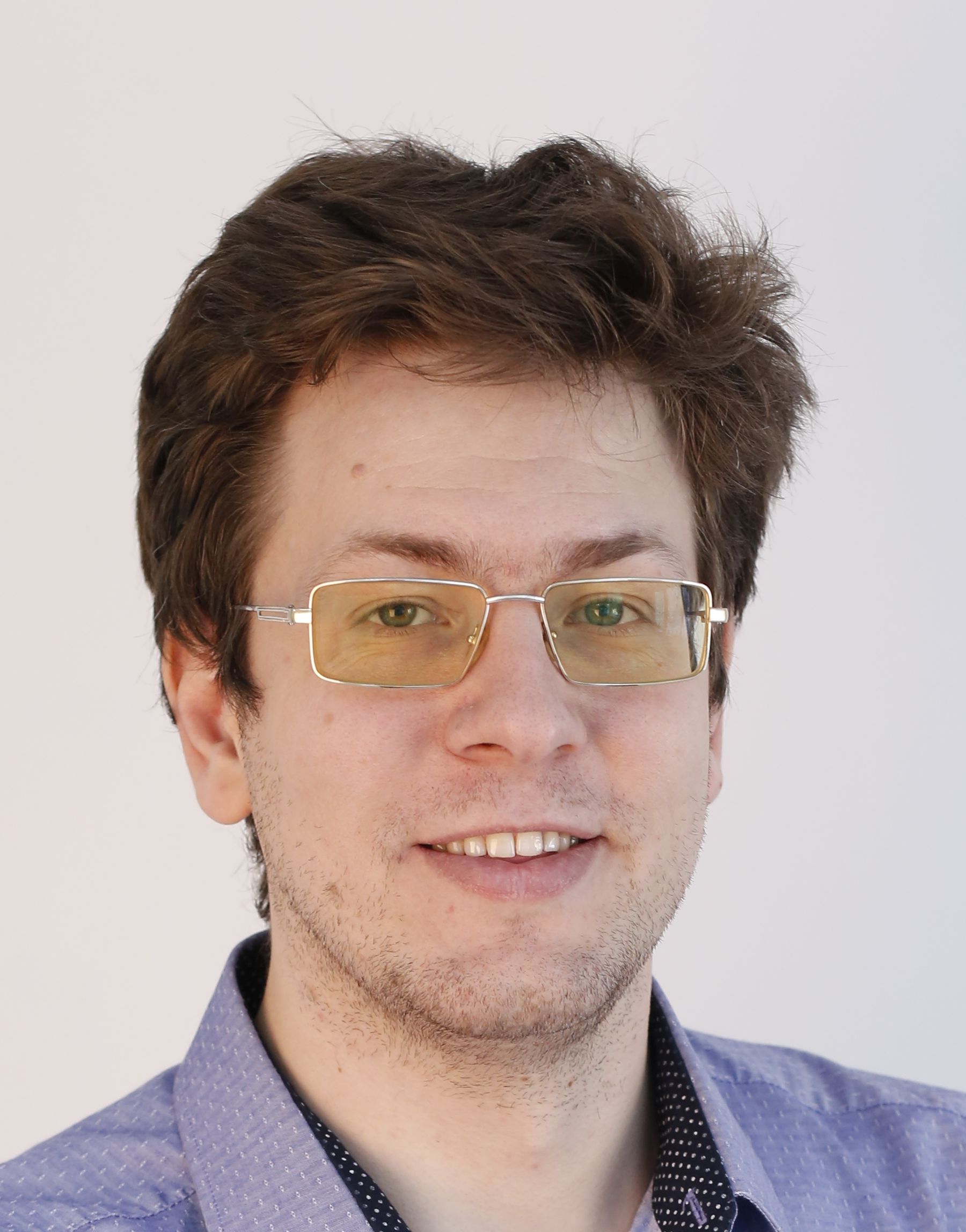 |
|
| Maxim A. Yurkin received his BS and MS degrees in physics from the Novosibirsk State University (NSU) with honors (2002, 2004), and dual PhD in computational science and biophysics from the University of Amsterdam and Voevodsky Institute of Chemical Kinetics and Combustion (ICKC, Novosibirsk), respectively (2007). His research interests include the theory and simulations of electromagnetic scattering, the discrete dipole approximation (DDA), and inverse light-scattering problems. Specifically, he has made multiple important contributions to the theory and numerical efficiency of the DDA, and is the main developer of the open-source ADDA code. He received inaugural Young Scientist’s Award in electromagnetic and light scattering from Elsevier (2007) and two Prizes of the Academia Europaea for Russian young scientists (2010, 2016). | |
| The discrete dipole approximation for light-scattering simulations | |
| Light scattering is widely used in remote sensing of various objects ranging from metal nanoparticles and macromolecules to atmospheric aerosols and interstellar dust, being in some cases the only available approach to characterize their geometric or optical properties. All these applications require accurate simulations, which are not trivial for particles of arbitrary shape and internal structure. The discrete dipole approximation (DDA) is one of the general methods to handle such problems. In this talk I will start with an introduction to the DDA, including both the basic underlying physical picture and rigorous derivation starting from the integral form of Maxwell’s equation for the electric field. The latter shows that the DDA is a numerically exact method and a special case of volume-discretization method of moments. Importantly, the DDA applies to almost any electromagnetic problem involving non-magnetic particles. It can handle arbitrary shaped beams, particles in complicated environments (e.g., on a multi-layered substrate), and simulate a broad range of quasi-classical electromagnetic phenomena (such as emission enhancement, near-field radiative heat transfer, and electron energy-loss spectroscopy). I will also discuss computational aspects, including the latest efficiency improvements, and the existing open-source DDA codes that largely explain the method’s popularity. Finally, I will highlight current capabilities and limitations (open questions) of the DDA. |
 |
|
| Institution | |
| “High-order Fano resonance in mesoscale spheres” | |
| Abstract of the talk |
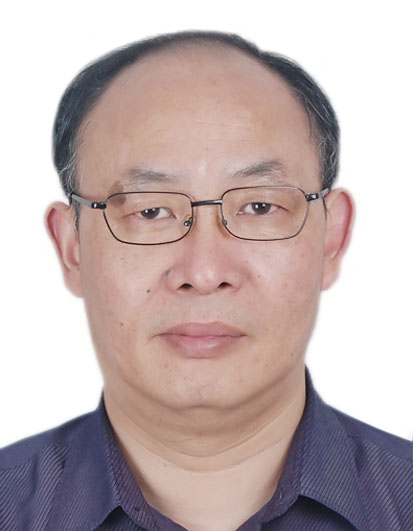 |
|
| Prof. Jianqi Shen got his doctor degree from university of Shanghai for Science and Technology in 1999 and 4 years late he got his second doctor degree in Brandenburg university of Cottbus. Now he is working in university of Shanghai for Science and Technology. He is on the board of Chinese Society of Particuology. His research interest covers particle size analysis and electromagnetic scattering. | |
| “Title of the talk” | |
| Abstract of the talk |
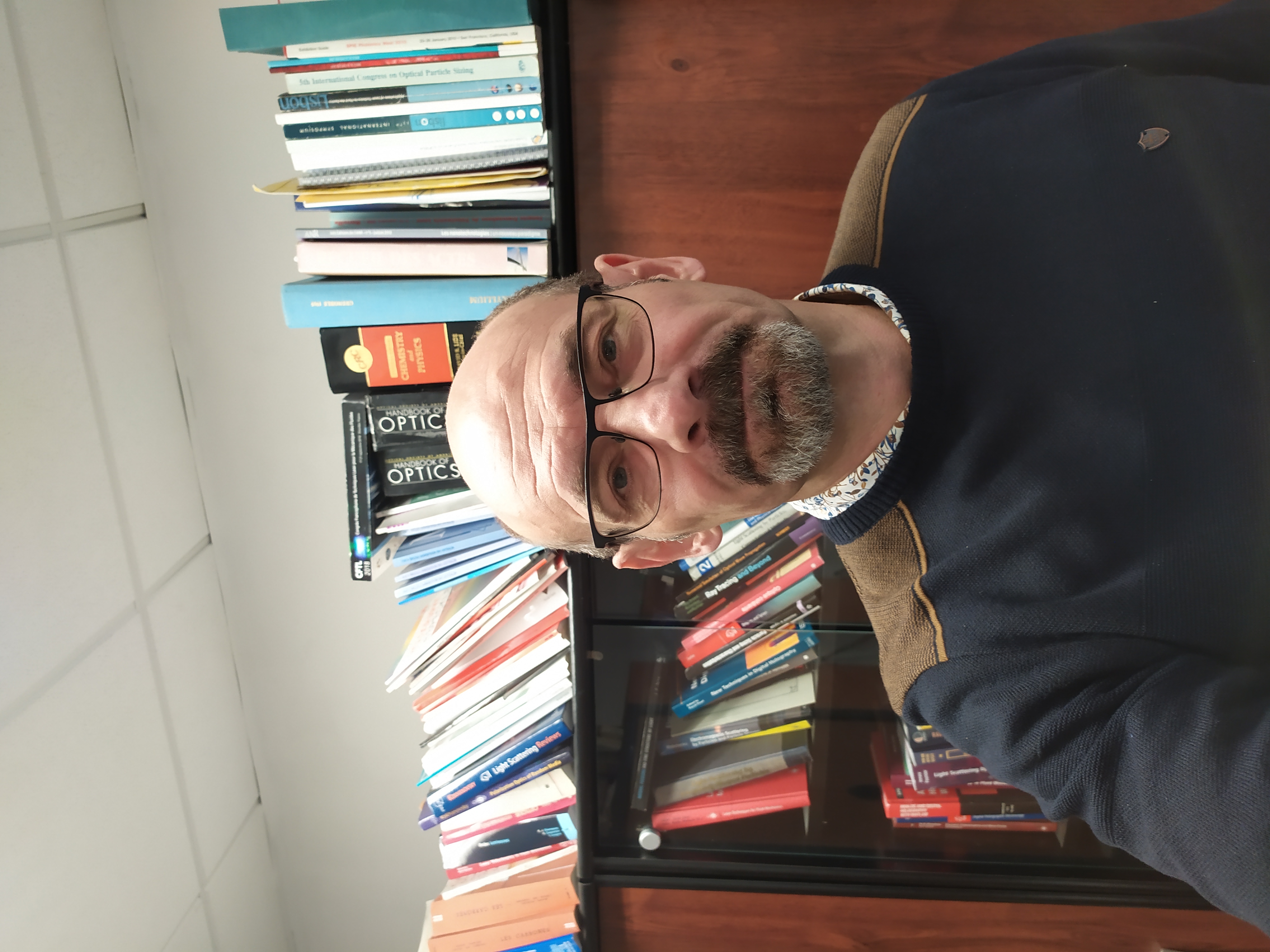 |
|
| Fabrice Onofri is a research director at the French National Center for Scientific Research (CNRS). His research mainly focuses on the optical and electromagnetic characterization of particle and particle systems. Over the years, his research has found applications in various fields ranging from aerosols and multiphase flows, to soft matter and plasma physics, in the frame of national and international projects as well as industrial granted projects. He earned his Ph.D. degree at the University of Rouen and his habilitation degree at Aix-Marseille University, France.. | |
|
Digital holography for particle
characterization: optical compression and
contribution of the direct problem modeling Fabrice R.A. Onofri, Lilian Chabrol |
|
| Digital holography is a volumetric optical technique with unique features for real-time 3D characterization of particulate media. However, it remains limited by two critical factors: the lack of precision of the propagation and diffusion model used for inversions or direct calculations, and its inability to analyze media other than highly diluted ones. In this work, we attempt to overcome these limitations by introducing a model combining geometrical optics and physical optics, whose accuracy is assessed using Lorenz-Mie and Debye theories coupled with the localization principle, and a new method of optical compression of holograms. |
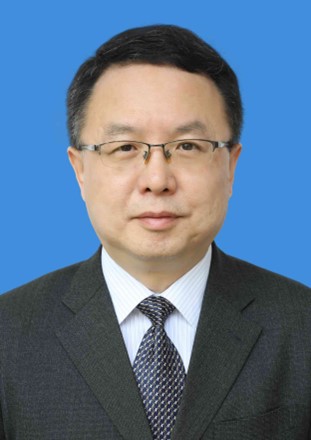 |
|
| Prof. Dr. Baoli Yao received the B.S. degree in Applied Physics at Xi'an Jiaotong University, China in 1990, and the Ph.D. degree in Optics at Xi'an Institute of Optics and Precision Mechanics (XIOPM), CAS in 1997. He pursued the postdoc at Institute for Physical Chemistry, Technical University of Munich, Germany during 1997-1998. He obtained the professorship at XIOPM in 1999. He is a senior member of OSA, and the director of State Key Laboratory of Transient Optics and Photonics, China. His research fields include: super-resolution and 3D optical microscopy, digital holographic microscopy, imaging through scattering medium, optical micro-manipulation and photomechanics. He has published more than 330 papers in peer-reviewed journals and 7 book’s chapters, and owned 25China & 1 US invention patents. He obtained the High-speed Imaging Award of Japan in 2015. | |
| “Title of the talk” | |
| Abstract of the talk |
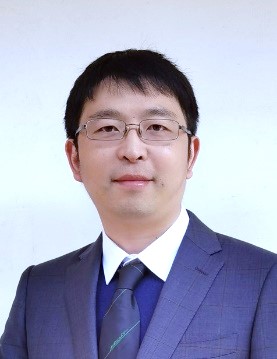 |
|
| Prof. Dr. Peng Gao, studied Physics and received his Ph.D. at the Xi’an Institute of Optics and Precision Mechanics (XIOPM), CAS, in 2011. He was a “Humboldt Fellow” in University Stuttgart (2012-2014) and Marie-Curie Fellow (IEF) in KIT (2014-2018). He is currently a PI at Xidian University and the director of Super-resolution Optical Microscopy Engineering Research Center at Xi’ an city. His group focuses on developing super-resolution optical microscopy and quantitative phase microscopy techniques for biology. So far, he has authored over 100 peer-reviewed papers published in journals, including Nat. Photonics, Adv. Opt. Photon. Some of his publications were highlighted by tens of international media, such as Science Daily, Physics News, and so on. He is currently one of the associate editors of Optics and Laser Technology (OLT) and Frontiers in Physics. | |
| Super-resolution Fluorescence and Quantitative Phase Microscopy Visualize Live Cells in 3D | |
|
Optical three-dimensional (3D) microscopy is of
great importance in many fields, especially in
biology. Due to the transparency of biological
samples (such as biological cells) under visible
light, optical 3D microscopy is often
implemented with fluorescence imaging, phase
contrast imaging, or other nonlinear processes
to enhance the contrast of intracellular
structures. In this talk, two 3D optical
microscopic technique, namely, sparse scanning
structured illumination microscopy (SS-SIM) and
quantitative phase contrast tomography (QPCT),
will be presented. In SS-SIM, structured patterns of different orientations and different phase shifts are generated by resonantly scanning a focused light and modulating its intensity sinusoidally. As a consequence, super-resolution and optical-sectioned fluorescence imaging with a penetration depth of ~300 micrometers can be performed, implying a great potential for deep tissue imaging. In QPCT, 24 LEDs distributed on a ring are lighted up one by one sequentially to generate oblique illuminations at different angles, and quantitative phase contrast imaging for each illumination is carried out by retardering the dc term for four different phase shifts with an ultra-fast SLM. A 3D tomographic phase map is reconstructed from the complex amplitudes obtained at different illumination angles. Both the SS-SIM and QPCT were utilized to obtain 3D subcellular organelles inside live COS7 cells. The comparison of the two imaging modalities tells that SS-SIM enables visualization of specific subcellular organelles in virtue of fluorescence tagging. While, QPCT can visualize up to ten types of subcellular organelles once for all, for that nearly all the subcellular organelles have different refractive index above the cytosol. The combination of the 3D fluorescence and phase images provide complementary information for the same sample, contributing to revealing the mechanisms of many life events. |
Program
-
- Program & book
- Wednesday, 18th
- Thursday, 19th
- Friday, 20th
- Saturday, 21th
- Sunday, 22th
Not yet available
Available in due time.
Available in due time.
Available in due time.
Available in due time.
Available in due time.
Available in due time.
Instructions to Authors
-
- Presentations
- Procedure & deadlines
- Submit an abstract
- Special issue papers: JQRST
Three formats are
scheduled for oral presentations (in-person or remote
participation):
- Keynote lectures (invited talks of 40 minutes plus 5 minutes for questions, in-person or remote),
- Regular presentations (20 minutes of presentation plus 5 minutes for questions, in-person or remote)
- Posters (special session with a best poster award, remote only, via the conference website)
For both oral and poster
presentations (in-person or remote), authors are invited
to submit an extended abstract of at least
1000 words and with a maximum of three pages,
including supporting figures and references as
appropriate. As there is necessarily a limited number of
oral presentations, the scientific committee will make
the final decision on the presentation format on the
basis of two independent reviews plus
the authors wish. At least one of the authors is
required to register for the conference and the same
person may only present a maximum of two oral
presentations (no limit on the posters). All selected
contributions will be published in the
proceedings of the conference.
It is mandatory to use thisMS-Word template (download)
to prepare the extended abstract as there will be no
real typesetting process. Fill also this MS-Excel sheet (download)
to depict the abstract contains, the preferred
presentation format and session, the authors
affiliations,... All these data will be used for the
review process as well to build the conference program
and the list of participants. When ready, send these two
files by email to the conference secretary: contact@lip-conference.org
or lip2024_contact@163.com
It is mandatory to use this
- Abstract submission opens ................... May 1st, 2023
- Abstract submission ends...................... April 30th, 2024
- Notification of abstract acceptance........ May 20th, 2024
Simply send by email
your extended abstract (MS-Word file plus a pdf, download MS-Word template
here ) and the related information
(Excel file, download MS-Excel sheet here )
to the conference secretariat (contact@lip-conference.org
or lip2024_contact@163.com )
Following the highly successful
special issues previously published in the
Journal of Quantitative Spectroscopy and
Radiative Transfer (JQSRT) [2012, 2014, 2016,
2018, 2020,
2022]
we will solicit papers for a LIP2024
Special Issue that you will want your
state-of-the-art research to become part of yet
another benchmark collection of papers on light
and shaped beam interactions with particles and
particle systems. This Special Issue will
consist only of full-size papers documenting
research either reported at the conference or
pertaining to the main topics of LIP
conferences. Each submission will be
thoroughly reviewed by at least two independent
referees to ensure that all accepted manuscripts
satisfy the highest standards of
scientific quality adopted for JQSRT.
To expedite the communication of your research
results to the scientific community, each paper
will be officially published (including year,
volume, and page numbers) as soon as it has been
accepted, typeset, and proof-read. In other
words, the authors of accepted manuscripts will
see their papers officially published without
having to wait for the rest of the manuscripts
to get accepted. This accelerated publication
protocol is a recent improvement in the JQSRT
production process.
|
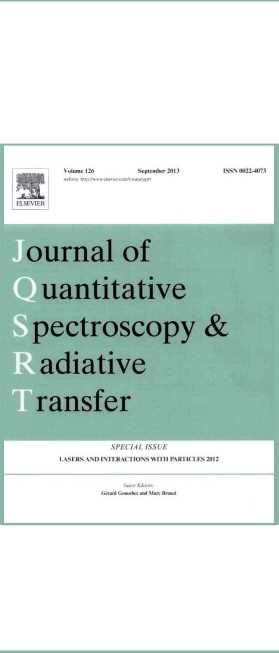
|
Registration
-
- Important dates
- Registration fees
- Register
- Abstract submission opens ................... May 1st, 2023
- Abstract submission ends...................... April 30th, 2024
- Notification of abstract acceptance........ May 20th, 2024
- Early registration opens......................... May 20th, 2024
- Late registration after............................. August 1st, 2024
In-person participation: there are 3 categories for the registration fees (in USD or Yuan, all taxes included) and they depend whether it is an early or / late registration:
- Student (Master, Ph.D)(1,2).....: 200/240 USD; 1400/1700 Yuan
- Academic & industry(1,2)........: 350/400 USD; 2400/2800 Yuan
- Accompanying person(1,3).....: 100/150 USD; 700/1000 Yuan
(2) Academic/industry/student registration fee includes: the Conference attendance, book of the conference abstracts and other common conference materials, lunches and coffee breaks mentioned on the program, LIP 2024 excursion, welcome reception and social dinner.
(3) Accompanying person registration fee includes: lunches mentioned on the program, LIP 2024 excursion, welcome reception and social dinner.
Practical
-
- Conference venue
- Transportation
- Accommodation
- About the city and the region
The conference venue is the Conference Center, North Campus, Xidian University, No. 2 South Taibai Road, Xi’an, China.
From Xi'an
Xianyang International Airport
1. Airport Shuttle Bus (it takes around one hour and 15 minutes) Line: Airport to Gaoxin District. Starting point: Airport; Ending location: Ziction Liberal Hotel Fee: 25 Yuan/person, Available Time: 8:30-21:00
2. Tax: (it takes around 45 minutes) Fee: around 100 Yuan
3. Subway (it takes around one and a half hour) Starting from Line 14, transfer at Xi’an North Station(西安北站) to Line 2, then transfer at Xiaozhai Station(小寨站) to Line 3, Stop at Kejilu Station(科技路站),walking 300 meters to Ziction Liberal Hotel
Map
1. Airport Shuttle Bus (it takes around one hour and 15 minutes) Line: Airport to Gaoxin District. Starting point: Airport; Ending location: Ziction Liberal Hotel Fee: 25 Yuan/person, Available Time: 8:30-21:00
2. Tax: (it takes around 45 minutes) Fee: around 100 Yuan
3. Subway (it takes around one and a half hour) Starting from Line 14, transfer at Xi’an North Station(西安北站) to Line 2, then transfer at Xiaozhai Station(小寨站) to Line 3, Stop at Kejilu Station(科技路站),walking 300 meters to Ziction Liberal Hotel
Map

|
Ziction Liberal Hotel (西安高新技术开发区高新路46号 志诚丽柏酒店)
Xi’an Ziction Liberal hotel is a four-star foreign affair-related business hotel. It is located in New century Square of Hi-Tech Development Zone, where is core section of CBD in Xi’an Hi-Tech Development Zone, with convenient traffic, business, finance. Shopping mall, Leisure and Entertainment are gathered here. Airport shuttle bus starting and terminating stations located on hotel parking area. The nearest Subway station away from hotel 50 meters only.
About the
city
Xi’an is the capital of Shaanxi province, located in the southern part of the Guanzhong Plain. With the Qinling Mountains to the north and the Weihe River to the south, it is in a favorable geographical location surrounded by water and hills. It has a semi-moist monsoon climate and there is a clear distinction between the four seasons. Except the colder winter, any season is relatively suitable for traveling.
Called Chang’an in ancient times, Xi’an is one of the birthplaces of the ancient civilization in the Yellow River Basin area of the country. During Xi’an’s 3,100 year development, 13 dynasties such as Zhou, Qin, Han and Tang placed their capitals here. So far, Xi’an enjoys equal fame with Athens, Cairo, and Rome as one of the four major ancient civilization capitals.
Xi'an attractions : The Museum of Qin Terra-cotta Warriors and Horses, Xi'an City Wall (Chengqiang), Muslim Quarter, Big Wild Goose Pagoda (Dayanta), Shaanxi History Museum, Dayan Pagoda Northern Square, Drum Tower (Gulou), Forest of Stone Steles Museum, Xi'an Bell Tower, Tomb of Emperor Jingdi (Hanyangling), Tang Bo Art Museum, Huaqing Palace, Xi'an Museum, Xi'an Mosque, Tang Paradise, Xi'an Qujiangchi Site Park, Guangren Temple, Small Goose Pagoda, Qing Long Si, Cuihua Mountain read more
Xi’an is the capital of Shaanxi province, located in the southern part of the Guanzhong Plain. With the Qinling Mountains to the north and the Weihe River to the south, it is in a favorable geographical location surrounded by water and hills. It has a semi-moist monsoon climate and there is a clear distinction between the four seasons. Except the colder winter, any season is relatively suitable for traveling.
Called Chang’an in ancient times, Xi’an is one of the birthplaces of the ancient civilization in the Yellow River Basin area of the country. During Xi’an’s 3,100 year development, 13 dynasties such as Zhou, Qin, Han and Tang placed their capitals here. So far, Xi’an enjoys equal fame with Athens, Cairo, and Rome as one of the four major ancient civilization capitals.
Xi'an attractions : The Museum of Qin Terra-cotta Warriors and Horses, Xi'an City Wall (Chengqiang), Muslim Quarter, Big Wild Goose Pagoda (Dayanta), Shaanxi History Museum, Dayan Pagoda Northern Square, Drum Tower (Gulou), Forest of Stone Steles Museum, Xi'an Bell Tower, Tomb of Emperor Jingdi (Hanyangling), Tang Bo Art Museum, Huaqing Palace, Xi'an Museum, Xi'an Mosque, Tang Paradise, Xi'an Qujiangchi Site Park, Guangren Temple, Small Goose Pagoda, Qing Long Si, Cuihua Mountain read more
Contacts
-
- Secretariat of the Conference
- Images & photos credits
- Last update
| Jiajie Wang School of Physics, Xidian University No.2, South TaiBai Road, 710071, Xi'an, Shaanxi Province, China E-mail: wangjiajie@xidian.edu.cn Mobile: (+86)13992831154 |
Renxian LI School of Physics, Xidian University No.2, South TaiBai Road, 710071, Xi'an, Shaanxi Province, China E-mail: rxli@mail.xidian.edu.cn Tel: (+86) 2988469165 |
| Mingjian CHENG School of Physics, Xidian University No.2, South TaiBai Road, 710071, Xi'an, Shaanxi Province, China E-mail: mjcheng@xidian.edu.cn Tel: |
Qinwei DUAN School of Physics, Xidian University No.2, South TaiBai Road, 710071, Xi'an, Shaanxi Province, China E-mail: qwduan@xidian.edu.cn Tel: |
Photographic
credits: L. Ambrosio, D. Jakubczyk, L. Méès,
F. Onofri, K.F. Ren & B. Pouligny.

